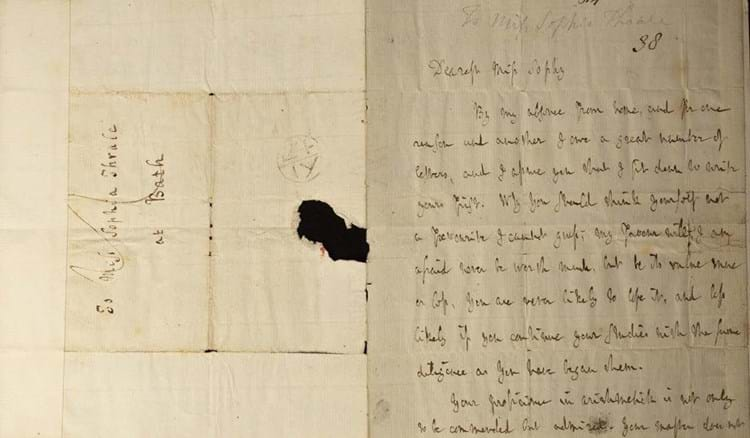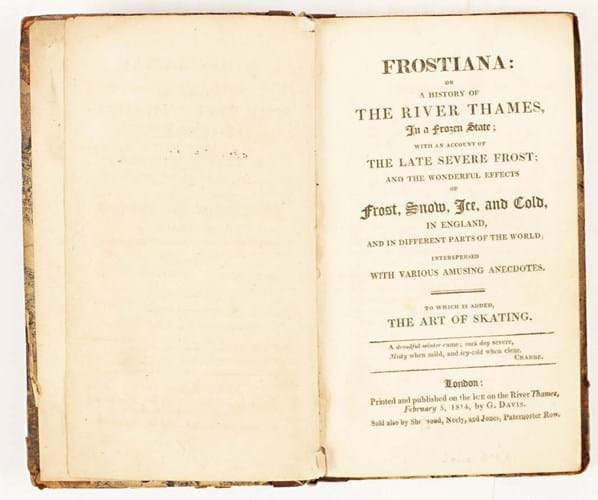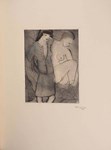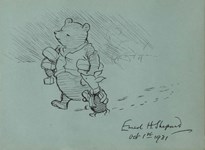Among a group of family correspondence found on a routine valuation in a Gloucestershire country house by Chorley’s (28.2% buyer’s premium inc VAT%) was a letter by Samuel Johnson (1709-84).
The essayist, biographer and lexicographer penned it to a 12-year-old Sophia Thrale (1771-1824), the sixth and youngest daughter of the author Hester Lynch Thrale (1741- 1821) with whom he corresponded regularly.
In the letter the elderly Johnson chides Sophia for not thinking of herself as his favourite: “My favour will, I’m afraid never be worth much, but its value more or less, you are never likely to lose it.”
He also praised her arithmetical ability but encouraged her studies: “Never think, my Sweet, that you have arithmetick enough, when you have exhausted your master, buy books, nothing amuses more harmlessly than computation.” Johnson pointed her to a “curious calculation” relating to the capacity of Noah’s Ark in John Wilkins’ Real Character, “an essay towards a real character and a philosophical language”.
The letters between Johnson and the Thrale family began in 1765 but their correspondence ended following Hester Lynch Thrale’s second marriage to an impoverished Italian music teacher who had taught her children (Gabriel Mario Piozzi). Johnson did not approve and their correspondence ceased in 1783.
The letter was known from The Letters of Samuel Johnson (1994) edited by Bruce Bedford but was described as “present location unknown”.
It carried an estimate of £8000-12,000 as part of the sale titled The Library: Printed Books & Manuscripts at Chorley’s on September 19 and sold for £30,000. An unnamed UK institution was the successful bidder and it may go on public view in due course.
Letters selection
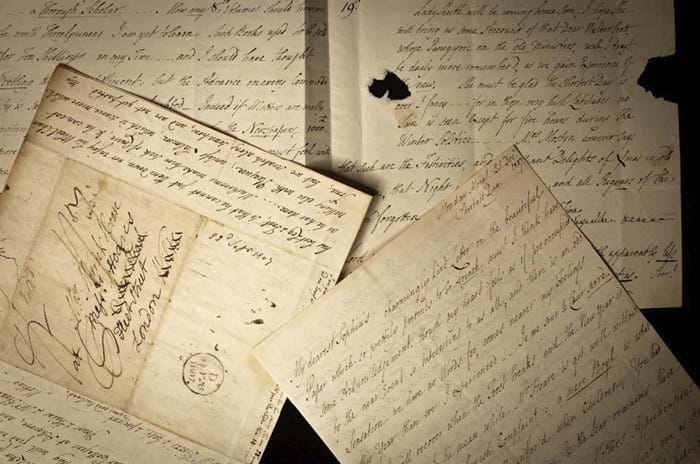
Series of 30 letters written between Sophie and her mother, and others mostly to Sophie from Sarah Siddons, £80,000 at Chorley's.
Sophia would later marry the banker Henry Merrick Hoare (1770-1826).
Among other letters from the same Gloucestershire property was a series of 30 written between her and her mother from 1805-21.
These are of considerable length and reflect the deep affection between the two, divulging society gossip and examples of their own poetry and verse. Encased in an unbound leather album bearing the bookplate of Henry Hoare, they had been forgotten by the Hoare family and never been published.
Within the same box was a selection of other letters mostly to Sophia from the stage actress Sarah Siddons (1755-1831), which includes a page where she complains that she must “embrace the dreadful fatigue of playing every night”.
This group sold as a single lot for £80,000 against an estimate of £15,000-20,000.
Frozen Thames
The books element of the Gloucestershire sale included a copy of Frostiana: Or a History of the River Thames in a Frozen State. It was published in 1814 during what would be the last-ever London frost fair.
Eight frost fairs were held on the Thames between 1607 and 1814, taking advantage of the firm ice that formed on the river as it flowed slowly in the shallows near the 18 arches of Old London Bridge. By 1831 a new bridge of just five stone arches had been built and the medieval structure was demolished.
In December 1813 (the bitter winter of Napoleon’s retreat from Moscow) ‘Old Father Thames was taken into custody’ by the cold and for close to six weeks (December 27 to February 5) merchants had set up booths on the thick ice to sell food, drink and souvenirs.
Among those looking to make a quick shilling was the Paternoster Row printer George Davis who printed at least some part of this diminutive 124-page guide (perhaps the title page or a quire) while on the ice. It is dated February 5, 1814, the last day of the fair, by which time the river ice was beginning to break up.
The book amounts to a written history of London’s frost fairs, interspersed with anecdotes, humour and practical advice on topics such as ice cream making and figure skating. Priced at three shillings, it was on sale at a number of London bookshops for much of the following year. As all the copies that survive appear to be first editions, it was seemingly never reprinted.
While the text is well-known through digital editions (the final chapter The Art of Ice Skating is one of the earliest works on the rules of figure skating) the book only rarely appears for sale.
In 2018 a worn copy in a later binding sold for £250 at Roseberys. Chorley’s copy, guided at £80-120 took £1700. One of 14 lots from the estate of the late Diana and Gospatric Home of Lily Farm, Buckinghamshire, it had the bookplate for Gordon Home of Vanmoor, Hambledon, Surrey.


